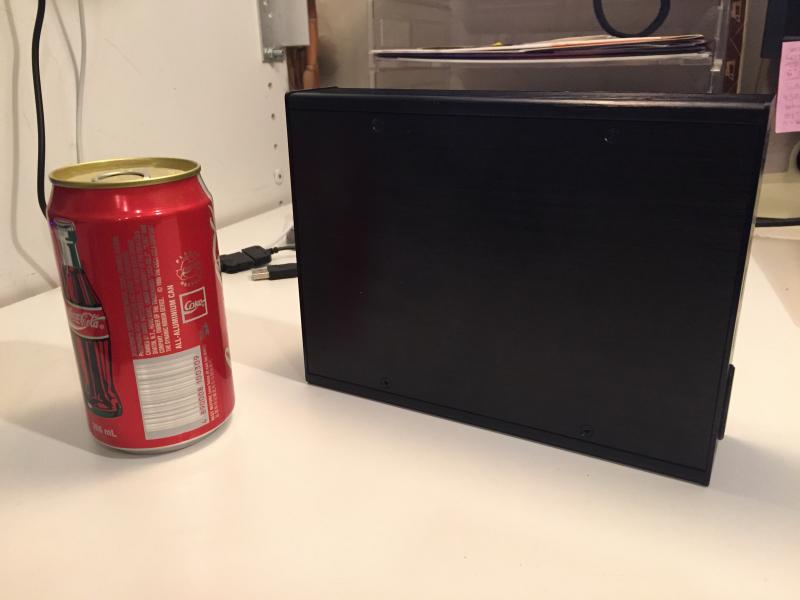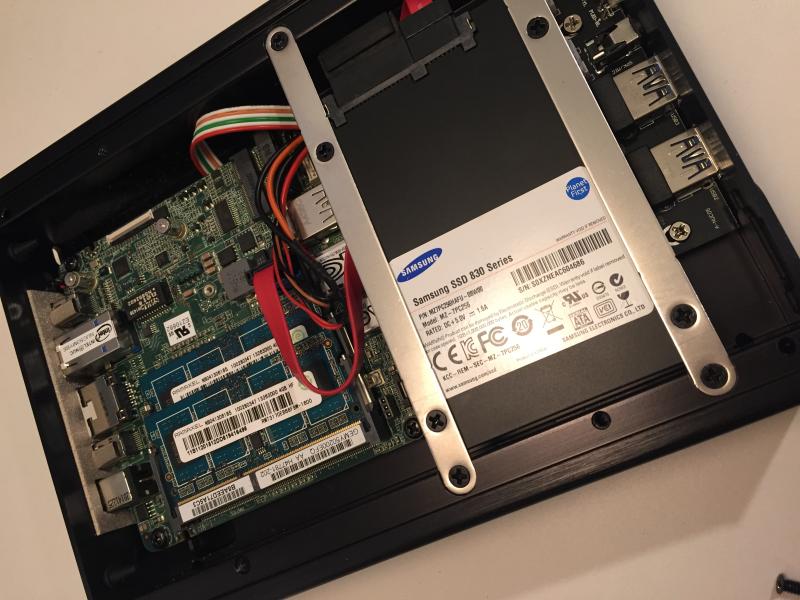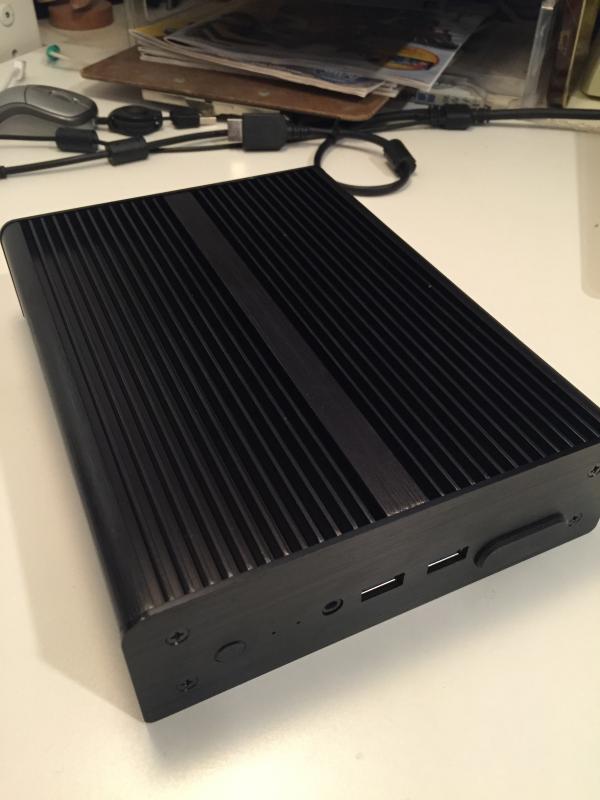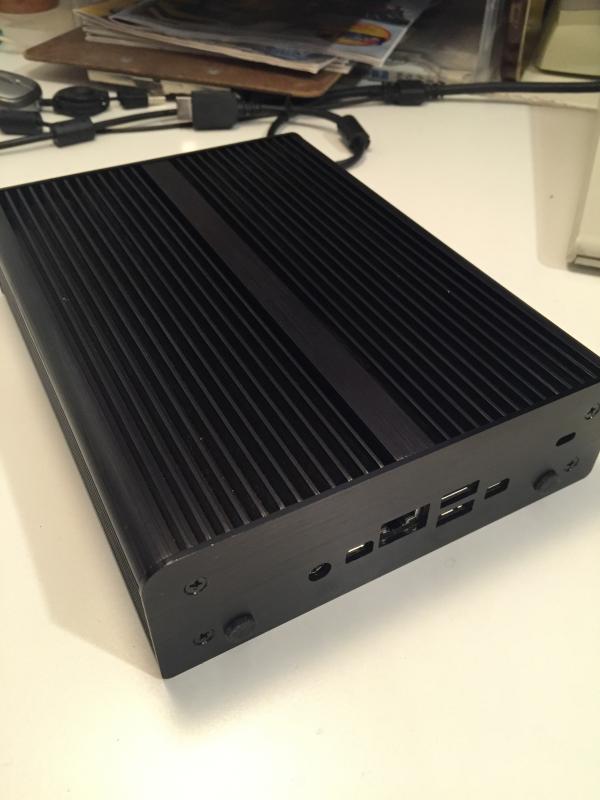Like the Yoga retrospective, this post is very late on account of the events described having taken place after the soft ending of Nonsense Wars, but I would still like to document my experience with this machine.
When I wrote about my original fanless NUC project I mentioned that the mSATA SSD ran into the 70s even after I attached some tiny aftermarket heatsinks. This was really a sign of things to come: in “production” all of the temps on that machine were higher than I would have liked – not dangerously so, but just enough such that I wasn’t comfortable. So I kept my eye out for a replacement.
In 2015 we got fifth generation NUCs, and one of the models had the two identical display outputs that I wanted from the DC53427HYE. For this new NUC, Akasa also released the Newton S, which had maybe 150 percent of the cooling surface of the old Newton V and also supported regular 2.5″ hard drives! So it was once again time to try a new build.

The NUC has gotten component upgrades and different port configurations over the various generations, but it fundamentally has not changed much. Even the current generation of NUC still has the same basic design and form factor as the first generation, and the prices have gone down a bit! It looks like the cheapest i3 kit in the current generation costs $240 whereas the first-gen equivalent was probably a bit over $300. Hooray for technology!
The specific kit I got to replace the DC53427HYE was the NUC5i3MYHE. The name is still very terrible and very specific. Originally I found the board by itself for what I thought was a cheap price, but the seller couldn’t fulfill the order, and then I was able to find the barebones kit at the same price. This model comes with the i3 5010U with an onboard HD Graphics 5000. One thing that tripped me up was that it only takes low-power DDR3 instead of standard voltage DDR3.

As for the new passive case, Newton S is basically the same thing as the Newton V, but longer. In that extra space they’ve thrown in mounting brackets for a 2.5″ drive. They’ve also added a front audio jack, which is really appreciated (though Intel also needed to add headers for those on the NUC board itself): on the DC53427HYE I had to use a USB audio adapter and that was really annoying. Assembling the system in the case was a non-issue, non-event.
The new machine probably cost about the same as the old one: something in the realm of $450 net. I say net because both times I ended up selling the stock NUC case and accessories for about $50. I sold the old DC53427HYE system for $350, which means that it only depreciated by about 25 percent in the first year of use – not bad at all.


Much like the first system, this system has been pretty much trouble free since day one, and the temps are much more reasonable. The machine is a year and a half old at the time of this writing and after hours of sustained light load the CPU and SSD temps are in the mid to upper 30s. I never see them go out of the 40s in normal use. You could probably add ten to fifteen degrees to both of those numbers for the old machine.
I suppose that’s all I have to say for now.
